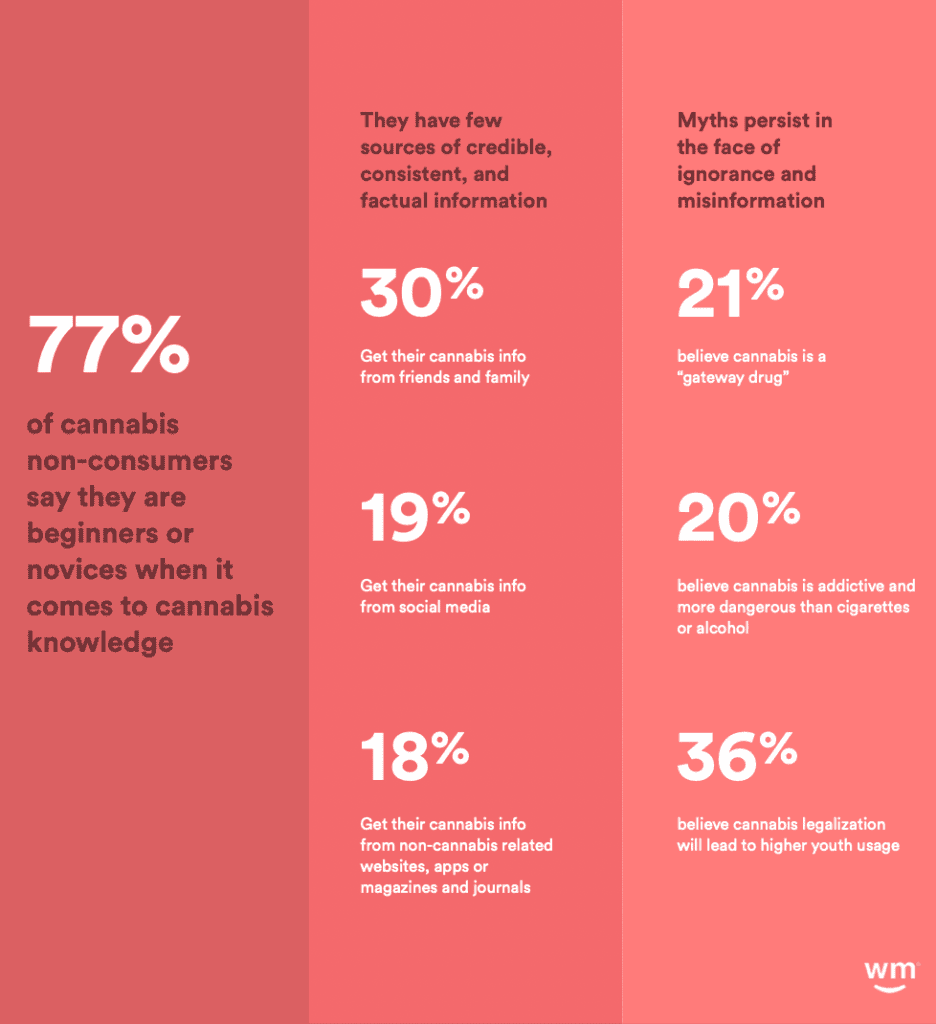A report from Weedmaps reveals that non-consumers are starting to view cannabis in a more positive or neutral light.
For most, the days whencannabis was considered a life-ruining gateway drug are over.
While there’s a contingent of non-consumers that still view cannabis in an entirely negative light, many recognize that it’s a personal choice that may be for medicinal reasons, but also for recreational purposes, just like alcohol. This is laid out as part of Weedmaps’ in-depth exploration of the state of cannabis in 2021.
Of the 41% of cannabis non-consumers polled that have cannabis consumers in their social circle, more than twice the number of them treat weed products with active or passive encouragement (13%) than outright disapproval or discouragement (6%). The majority in this group views cannabis neutrally, with 58% saying they neither mind nor encourage cannabis use.
“As society continues to be met with data, science, and experiences that counter the propaganda that fueled the war on drugs, the stigma associated with cannabis will continue to fade away,” Juanjo Feijoo, Weedmaps‘ CMO and COO, told Boardroom. “Our hope is that cannabis will become another characteristic that describes rather than defines the people who choose to include it in their lives, and will eventually be embraced as just another part of mainstream culture.”
Yet the misperceptions about cannabis among non-consumers can be stubbornly persistent, shaped by decades of misinformation and a lack of knowledge. An overwhelming 77% of non-consumers say they’re beginners or novices when it comes to cannabis knowledge. To compound that, few of them have credible sources of cannabis information, which has serious consequences and byproducts.

Still, more than a ffith of cannabis non-users believe that it is a gateway drug and is both addictive and more dangerous than cigarettes or alcohol. Yet major inroads are being made when it comes to breaking social taboos and to challenging cannabis shaming tactics. When it comes to consuming cannabis in public, 35% say they would use it walking down the street or sitting in a public park. That includes 39% of young baby boomers (age 57-66) and 37% of women. And 31% would be comfortable bringing and using cannabis products at a restaurant, bar or cafe. That includes 44% of millennials and 43% of women surveyed — two major groups that are leading the way in going out in a post-pandemic landscape.
“This is indicative of a future where consumers become increasingly more comfortable bringing cannabis into their day-to-day lives,” Feijoo said, “whether it’s for medicinal or recreational purposes.”
Cannabis cafes and restaurants like the West Hollywood Cannabis Cafe, the first of its kind in the U.S., and the cannabis consumption club Villa Noble are going to become more prevalent over time in cities where cannabis is legal, with SoHo House-style establishments on the horizon.
As the stigma around cannabis becomes less prevalent, the comfort level around weed products and cannabis culture will continue to gain traction among users and non-users alike. Cannabis’ ascent into mainstream culture has arrived, and soon taking an edible or smoking a joint will be viewed by a larger segment of the population the same way it sees having a beer at your local bar with a friend.